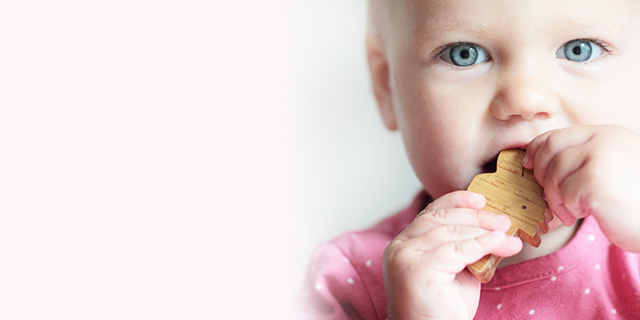What’s wrong with sugary snacks, anyway?
Sugary snacks taste so good — but they aren’t so good for your teeth or your body. The candies, cakes, cookies and other sugary foods that kids love to eat between meals can cause tooth decay. Some surgary foods have a lot of fat in them, too. Kids who consume sugary snacks eat many different kinds of sugar every day, including table sugar (sucrose) and corn sweeteners (fructose). Starchy snacks can also break down into sugars once they’re in your mouth.
How do sugars attack your teeth?
Invisible germs called bacteria live in your mouth all the time. Some of these bacteria form a sticky material called plaque on the surface of the teeth. When you put sugar in your mouth, the bacteria in the plaque gobble up the sweet stuff and turn it into acids. These acids are powerful enough to dissolve the hard enamel that covers your teeth. That’s how cavities get started. If you don’t eat much sugar, the bacteria can’t produce as much of the acid that eats away enamel.
How can I “snack smart” to protect myself from tooth decay?
Before you start munching on a snack, ask yourself what’s in the food you’ve chosen. Is it loaded with sugar? If it is, think again. Another choice would be better for your teeth. And keep in mind that certain kinds of sweets can do more damage than others. Gooey or chewy sweets spend more time sticking to the surface of your teeth. Because sticky snacks stay in your mouth longer than foods that you quickly chew and swallow, they give your teeth a longer sugar bath.
You should also think about when and how often you eat snacks. Do you nibble on sugary snacks many times throughout the day, or do you usually just have dessert after dinner? Damaging acids form in your mouth every time you eat a sugary snack. The acids continue to affect your teeth for at least 20 minutes before they are neutralised and can’t do any more harm. So, the more times you eat sugary snacks during the day, the more often you feed bacteria the fuel they need to cause tooth decay.
If you eat sweets, it’s best to eat them as dessert after a main meal instead of several times a day between meals. Whenever you eat sweets — in any meal or snack — brush your teeth well with a fluoride toothpaste afterward.
When you’re deciding about snacks, think about:
The number of times a day you eat sugary snacks.
How long the sugary food stays in your mouth.
The texture of the sugary food (Chewy? Sticky?).
If you or your child, snack after school, before bedtime, or other times throughout the day, choose something without a lot of sugar or fat. There are lots of tasty, filling snacks that are less harmful to your teeth—and the rest of your body — than foods loaded with sugars and low in nutritional value. Snack smart!
Low-fat choices like raw vegetables, fresh fruits, or whole-grain crackers or bread are smart choices. Eating the right foods can help protect you from tooth decay and other diseases. Next time you reach for a snack, pick a food from the list below or make up your own menu of non-sugary, low-fat snack foods from the basic food groups.
How can you snack smart? Be picky!
Choose a variety of foods from these groups:
Fresh fruit and raw vegetables:
Berries
Oranges
Grapefruit
Melons
Pineapple
Pears
Tangerines
Broccoli
Celery
Carrots
Cucumbers
Tomatoes
Unsweetened fruit and vegetable juices
Canned fruit in natural juices
Grains
Bread
Plain bagels
Unsweetened cereals
Unbuttered popcorn
Tortilla chips (baked, not fried)
Pretzels (low-salt)
Pasta
Plain crackers
Milk and dairy products
Low or non-fat milk
Low or non-fat yogurt
Low or non-fat cheese
Low or non-fat cottage cheese
Meat, nuts and seeds
Chicken
Turkey
Sliced meats
Pumpkin seeds
Sunflower seeds
Nuts
Others
These snacks combine foods from the different groups
Pizza
Tacos
Remember to:
Choose sugary foods less often.
Avoid sweets between meals.
Eat a variety of low or non-fat foods from the basic groups.
Brush your teeth with fluoride toothpaste after snacks and meals.
Note:
The foods listed have not all been tested for their decay-causing potential. However, knowledge to date indicates that they are less likely to promote tooth decay than are some of the heavily sugared foods children often eat between meals.
Candy bars aren’t the only culprits. Foods such as pizza, breads, and hamburger buns may also contain sugars. Check the label. The new food labels identify sugars and fats on the Nutritional Facts panel on the package. Keep in mind that brown sugar, honey, molasses and syrups also react with bacteria to produce acids, just as refined table sugar does. These foods also are potentially damaging to teeth.
Your child’s meals and snacks should include a variety of foods from the basic food groups, including fruit and vegetables; grains, including breads and cereals; milk and dairy products; and meat, nuts and seeds. Some snack foods have greater nutritional value than others and will better promote your child’s growth and development. However, be aware that even some fresh fruits, if eaten in excess, may promote tooth decay. Children should brush their teeth with fluoride toothpaste after snacks and meals. (So should you!)
Please note: These general recommendations may need to be adapted for children on special diets because of diseases or conditions that interfere with normal nutrition.




























